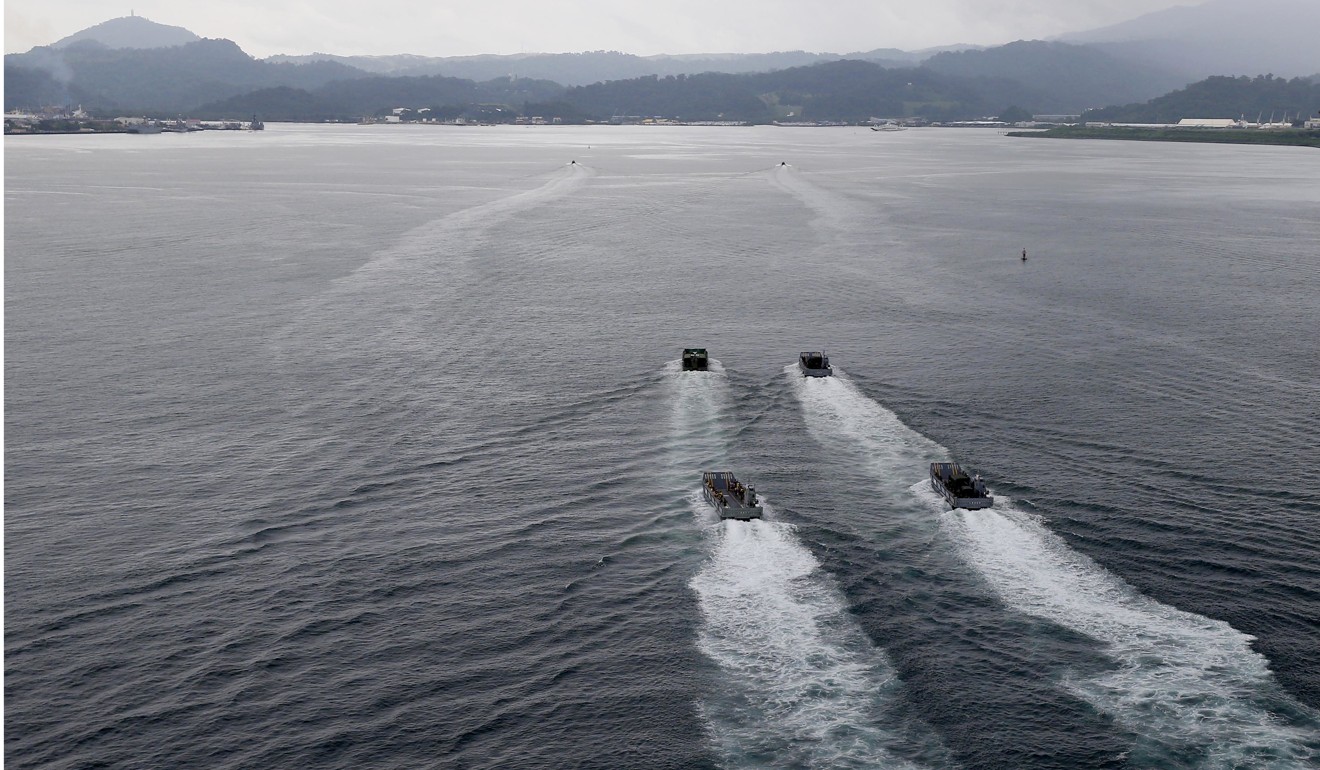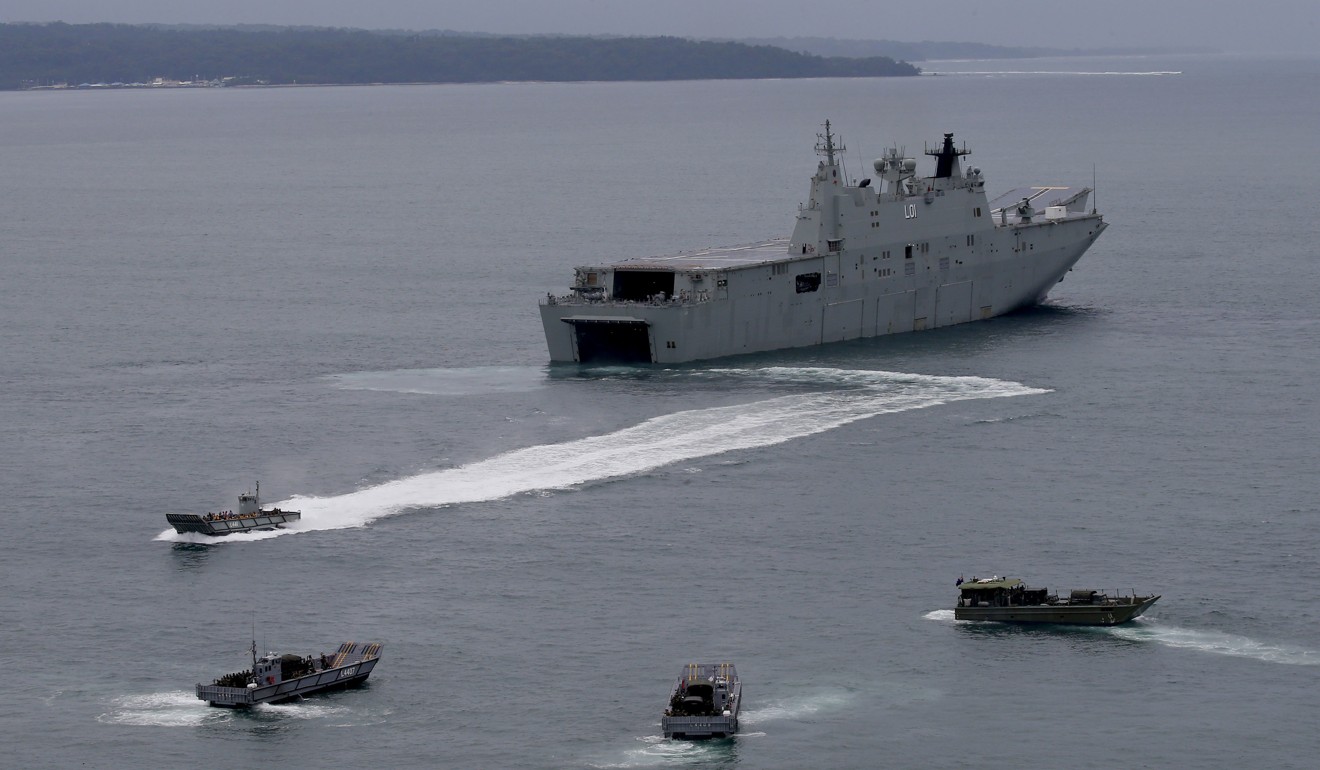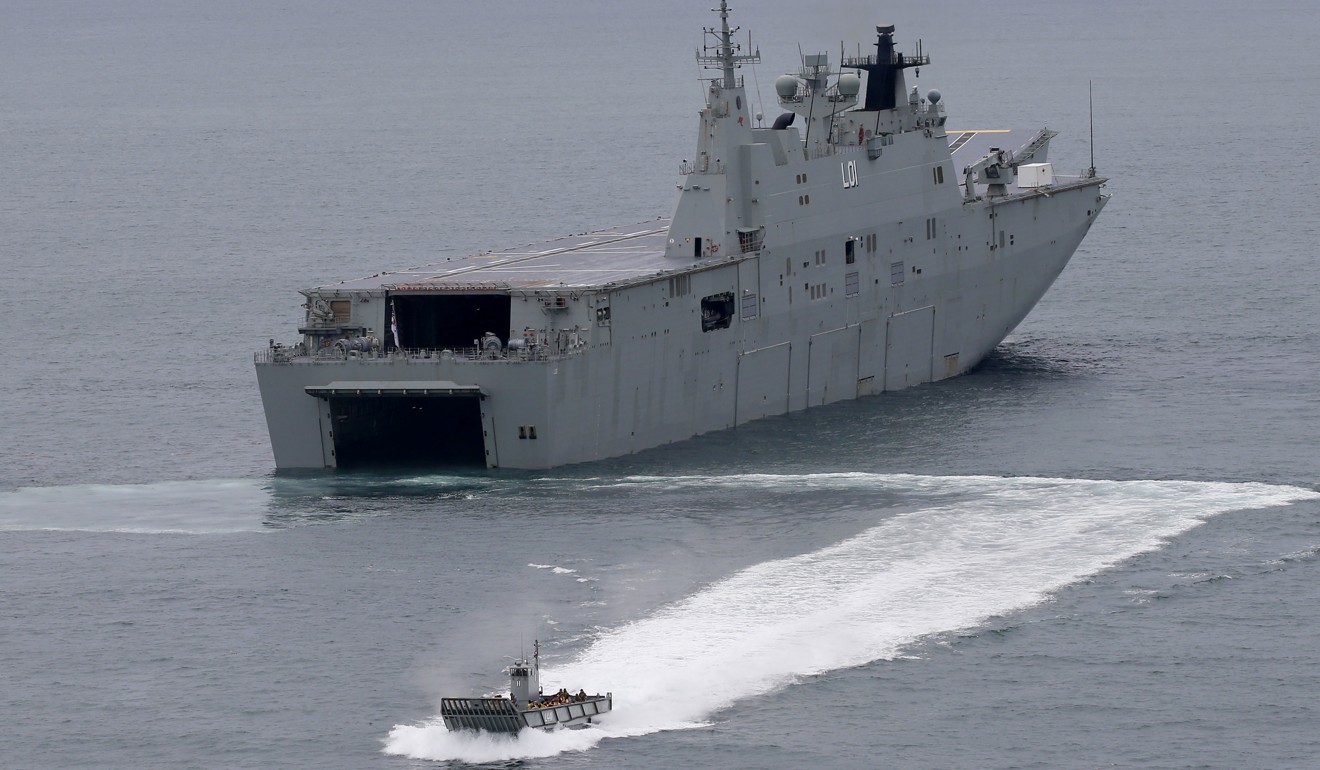
Philippine, Australian forces stage sea drill as ties deepen
Filipino and Australian naval forces darted across the sea and landed on a Philippine wharf in a disaster-response drill on Sunday that reflects their deepening security ties in a region prone to calamities, piracy and territorial rifts.
Lieutenant Colonel Daniel Turner of the Australian Defence Force said the naval manoeuvres in Subic Bay, northwest of Manila, will strengthen the two countries’ ability to jointly respond to typhoons and other disasters when roads, bridges and ports are damaged or destroyed.

The drills reflect the strengthening security relations between the two US allies despite Philippine President Rodrigo Duterte’s often antagonistic stance towards American security policy. Australia and the United States have deployed surveillance aircraft to help Filipino troops quell a disastrous siege by pro-Islamic State group militants in southern Marawi city.
During the manoeuvres, more than 100 Philippine marines and Australian naval personnel took off from an Australian navy ship, the HMAS Adelaide, on board troop carriers then rushed to a port at Subic Bay, a former US naval base.

When typhoons and floods happen, “traditional infrastructure is damaged and the only way we could get to the affected area is through helicopters and landing craft”, Turner said. “Our militaries can operate together, support those affected people.”
Australia signed a 2007 accord that allows its forces to train in the Philippines. Australia is the only country besides the US with which Manila has forged such a defence pact, commonly known as a status of forces agreement.

Subic Bay faces the South China Sea, where China, the Philippines and four other governments have long-unresolved territorial disputes, but Australian officials stressed that Sunday’s exercises were aimed only at improving the ability of Australian and Philippine forces to deal jointly with natural catastrophes.

Australia does not take sides in the disputes, but Captain Jonathan Earley, commanding officer of the Adelaide, said his government has an interest in keeping regional stability and the rule of law.
“What that includes is our ability to conduct freedom of trade, so trade is unimpeded, and that countries do have that ability to exercise freedom of navigation.”

